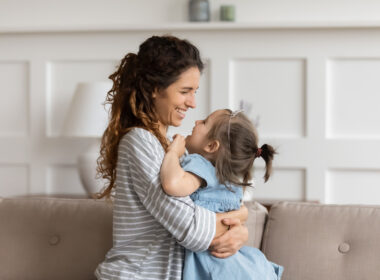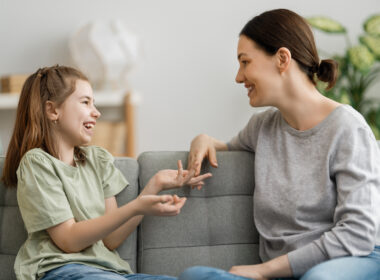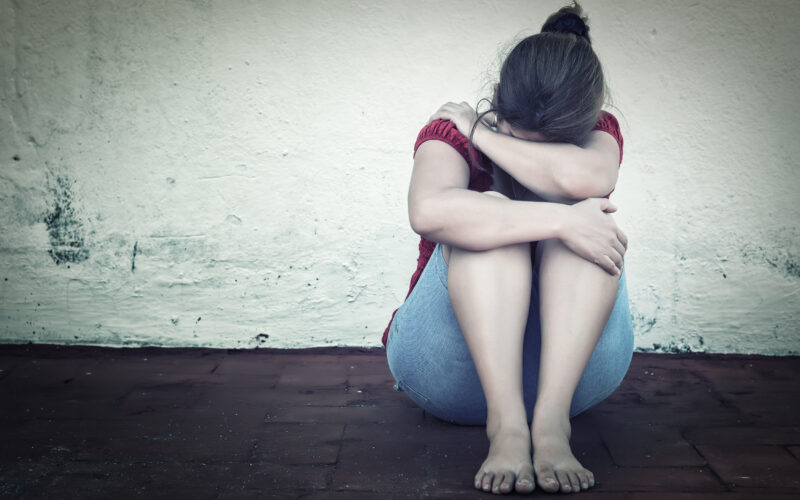This summer, the Marvel movie Black Widow featuring Scarlet Johannson finally offered some backstory into the life of the much-neglected superheroine, Natasha Romanoff. As one of the Avengers without superhuman strength, Romanoff is known for her expert interrogation and investigatory skills gained from her time as a Russian operative. Films reveal tidbits from her past over the Marvel Comic Universe cannon. We know her training was something of a forced trial by fire, and in Avengers: Age of Ultron, it’s revealed that a part of the training includes sterilization. “It’s efficient,” she tells Bruce Banner.
In Black Widow, Romanoff, reconnected with her sister Yelena, vows to combat the system that led to her oppression. It is revealed that the two sisters do not have menstrual cycles as a result of their exploitative training program.
“They rip out all of your reproductive organs,” Yelena explains. “They chop them all away . . . so you can’t have babies.”
The system Yelena and Natasha Romanoff end up fighting in the culmination of Black Widow reveals a network of trafficked women treated as disposable pawns in the battles of more powerful actors. The women were kidnapped as girls or otherwise lured into the “Red Room,” before being enslaved and forced into an aggressive militia training program, wherein their free will is stripped from them, requiring them to comply with everything commanded of them. Some escape, as Natasha and Yelena did, but these are the exceptions.
The film Black Widow is not making a subtle comparison to human trafficking and other exploitations of girls and women in its plot. While it’s a comic book story, the plot contains clear allusions to real-life abuses of girls and women, and not by accident. Black Widow director Cate Shortland told USA Today her goal was to “have the Marvel universe intersect with reality. So we talked about trafficking. We talk about women’s reproductive rights in the film because they’re things we care about.”
Reproductive harm and sex trafficking
Human trafficking takes place in the forms of labor trafficking (when people perform labor through the use of force, fraud, or coercion) and sex trafficking (when people are sold in commercial sex acts through the use of force, fraud, or coercion, or when any minor is sold in commercial sex acts). Trafficking is a modern-day slavery that takes place all over the world, including the United States. And, as I discovered completing a yearlong journalism fellowship on the topic, sex trafficking takes place in all areas of the sex industry, from prostitution and strip clubs to pornography.
Sex traffickers most often come in the form of a “pimp,” a person who grooms, recruits, and profits from selling people in sex. Young women, men, girls, and boys, can become caught up in sex trafficking in a number of ways, from being kidnapped, to being manipulated by a charming boyfriend into helping him make money to get out of a bind. However it begins, sex trafficking involves significant sexual abuse and trauma, often a Stockholm Syndrome-type bonding to the trafficker making it hard to escape, and harder for law enforcement to detect. For many girls and young women, it involves significant reproductive abuse as well.
The role of birth control in sex trafficking
Survivors of sex trafficking have told me that pimps will take advantage of any opportunity to make a buck by selling sex. Since much of sex trafficking involves selling sex in prostitution, maximizing profit for traffickers requires that trafficked women not get pregnant. In other words, birth control is essential to be “efficient” in the sale of sex. Whether a trafficked woman attempts to use condoms, is on hormonal contraceptives, is sterilized, uses Plan B, or has an abortion when pregnant, birth control is an essential part of making money for traffickers.
“Commercial sex has a wide range of negative effects on the reproductive health of prostituted women and trafficked girls,” Dr. Michael Shively, senior advisor on research and data analysis for the National Center on Sexual Exploitation, told me in an email. “The consent and welfare of prostituted women is of little concern to pimps, traffickers, and brothel owners, and maximizing income is always the objective.” As a result of pressure to please and earn money, Dr. Shively explains, condom use is largely ineffective as a means of protecting from STIs or preventing pregnancy for trafficked women. As he told me:
Sexually exploited people often try to protect themselves through condom use but are usually forced or pressured into unprotected sex. Unprotected sex is regarded as an occupational hazard. Those who insist on condoms are frequently forced to engage in sex without them, and those who succeed in consistent condom use earn far less money than those who don’t. . . . Women insisting to protect themselves are substandard earners, and often pay the consequences of beatings and coercion until they become compliant and accommodating about allowing sex buyers unprotected sex.
Connie Rose, a sex trafficking survivor who helps other trafficked people with the organization Victims 2 Survivors, shared with me how she has known many women who have suffered reproductive harm from menstruation control methods as well as birth control methods. “I have known other survivors who were forced to use vagina cups so that your flow was not a part of the sexual experience. They are also a form of birth control,” she told me in a phone call, but used during prostitution, she says, “they created irritation in the lining of the uterus, and a lot of my friends who used them ended up having hysterectomies and incredible health problems.”
Rose told me that in the past when helping trafficked women, it was hard to set up a well women’s visit to the doctor without fear, “when there’s a warrant out for your arrest.” Rose is now a survivor trainer at Global Strategic Operatives, an organization that trains healthcare professionals how to identify and support trafficking survivors, stating “88% of victims seek medical care or treatment while being trafficked.” And since many girls and women who have been trafficked into prostitution are treated as criminals by law enforcement, advocacy organizations like Shared Hope International aim to train law enforcement officials how to recognize the signs and work with survivor-led groups to help women recognize cycles of abuse and leave their traffickers.
Shared Hope and NCOSE and other anti-trafficking organizations insist that the most effective way to reduce trafficking of persons is to follow the Nordic Model—to decriminalize prostituted people and focus law enforcement efforts on reducing demand for prostitution by criminalizing sex buyers, in addition to targeting traffickers.
While traction is being made to recognize signs of trafficking and help victims get the health and recovery services they need, there is a lot of work still left to be done, including in the area of women’s health. Often those seeking women’s health services are not identified as victims of trafficking, and are therefore given incomplete care.
According to Amanda De Jesus, a FertilityCare Practitioner Intern (FCPI) and a member of the Northwest Indiana Anti-Trafficking Coalition, “Unfortunately, there are many women and girls who are being evaluated by medical professionals while they are still being trafficked. Because a lot of these doctors aren’t trained to recognize the signs of trafficking, often they are just being treated for UTIs, STIs, etc., given birth control, and sent out the door.”
While some might still view this as a net good for the trafficked women coming in to receive birth control services, viewed another way, it is overlooking the larger problem and applying an insufficient treatment—one that might even cover up or further the abuse. “Birth control, in many ways, is another tool that a trafficker can use to take control away from a survivor,” De Jesus told me in an email. “When birth control is forced upon women (or they are coerced into taking it), I believe it shows these girls that their natural bodies are something to be hated and suppressed while they are used as an object for another’s pleasure. Not to mention the myriad of negative side effects that often accompany taking hormonal contraceptives.”
“Birth control, in many ways, is another tool that a trafficker can use to take control away from a survivor.”
This is born out in survivors’ testimonies. A 2015 report by Laura Lederer and Christopher Wetzel, published in the legal journal Annals of Health Law, was the first of its kind “to examine many of the reproductive health issues experienced by sex trafficking victims, including birth control usage, pregnancies, miscarriages, and forced and elective abortions.” Of the surveyed women, “a large majority (80.9%) of those who answered the question indicated that they had used some form of birth control for some portion of their time being trafficked. Of those who specified where they obtained the birth control, approximately half (51.7%) said they had obtained it from a doctor or clinic.”
As one survivor shared in Lederer’s report:
During the time I was on the street, I went to hospitals, urgent care clinics, women’s health clinics, and private doctors. No one ever asked me anything anytime I ever went to a clinic. . . . I was on birth control during the 10 years I was on the streets—mostly Depo-Provera shots which I got at the Planned Parenthood and other neighborhood clinics. I also got the morning-after pill from them.
Among the report’s recommendations to medical professions are to urgently “be made aware of critical signals for identifying trafficking victims.” Healthcare professionals need to be trained to “understand the coercive dynamic of trafficking, especially the extreme degree of control exercised by traffickers, and the prevalence of this criminal exploitation of women and girls.”
Abortion and sex trafficking
When trafficked women do get pregnant, many suffer forced abortions as a vicious follow-up measure of birth control. “Part of my story is that I was forced to have an abortion at 16,” Connie Rose told me. “It was a late-term abortion” at eight months gestation, and “a lot of my friends also had abortions, too,” she said, “as a means of birth control.”
“Some of it was controlled by their trafficker; some was by choice [of the trafficked woman] because the last thing they were going to do was let a trafficker have their child.” She added that the fallout of abortion is “not just mental side of it, but what it is doing to your body physically.”
Later in her advocacy work, Rose also helped a trafficked woman whose trafficker “beat her up” when she was pregnant, “so she would just naturally abort. I’m sure she’s not the only one,” she told me.
Sadly, forced abortion, and abortion under the oppressive context of sex trafficking, are very common for women and girls trafficked into prostitution. Lederer’s 2015 report found “more than half (55.2%) of the sixty-seven respondents who answered reported at least one abortion, with twenty respondents (29.9%) reporting multiple abortions.”
The report further explains, “While only thirty-four respondents answered the question whether their abortions were of their own volition or forced upon them, more than half (eighteen) of that group indicated that one or more of their abortions was at least partly forced upon them.”
Numbers like this make it unsurprising that the anti-abortion group Live Action revealed in undercover investigative videos of Planned Parenthood that abortion providers were ready to offer no-questions-asked abortion services to girls and women who identified as minors with pimp-like figures in their clinics. While protocol insists that people who appear trafficked should be connected with authorities and abuse-recovery services, these videos echo what many survivors say in their testimonies—that abortion clinics often provide the requested services without question, and then send them on their way.
Better ways forward for the reproductive health, empowerment, and protection of girls and women
While abuses against women are not entirely due to birth control, birth control is a constant that makes these sexual abuses easier to take place, and easier to keep under wraps. When a 14-year-old gets pregnant, for instance, that can be an obvious sign that statutory rape has happened (and may, in fact, be continuing to happen). When a 14-year-old is on birth control, that kind of abuse can go on much longer before people see the signs.
While abuses against women are not entirely due to birth control, birth control is a constant that makes these sexual abuses easier to take place, and easier to keep under wraps.
Even from women who are not sex trafficked, I hear echoes in social media groups of the pressure many women today feel to be “constantly available sexually” for their partners in order to have relationship security. Nonstop sexual activity separated from procreation isn’t sustainable without birth control, and this outlook is creating sex drives that are not naturally sustainable. It can foster difficulty down the road in maintaining self-control when sex is not available for completely human reasons, such as when a partner isn’t well, has surgery, is bereaved, or is postpartum—times when love should be expressed in different ways. And it gives women the impression they are not valuable for simply being themselves, but for their utility to be used by others for pleasure, which is to reduce their value to that of an object.
To use women as objects dehumanizes them, and a part of what makes women human is our reproductive capabilities. As a result, we should consider no-questions-asked birth control services for women and girls with some amount of skepticism and apprehension. If we don’t work harder as a society to identify the controlling of women and girls in sex trafficking, we may ignorantly participate in the perpetuation of abuse, and birth control can be just another form of exploitative control.
Women who use modern fertility awareness methods instead of birth control say they feel more in the driver’s seat of their reproductive health, and they are more able to read their body’s signs and understand their health and fertility. As a result, women who have switched from birth control to fertility awareness methods express feelings of being more in tune with their bodies, greater self-agency in sexual relations, and a greater sense of equality between partners.
When teen girls are taught fertility awareness, there is evidence that it helps reduce at-risk behavior. As Anna Migeon shared in her impactful article on “Cycle Mindfulness:”
In the 1980s, Leslie Carol Botha taught basic fertility awareness charting to teen girls (13-17 year-olds) at eight different restorative care homes for at-risk girls. A typical girl in the program had been a victim of sexual assault, ran away from home, used drugs and alcohol, and ended up in jail. In working with these girls, Ms. Botha made an amazing discovery: teens who are taught fertility awareness and how to chart their cycles can regain control of their lives.
Here is what she found out: for 90% of the girls in the program who had ended up in jail, it happened during the premenstrual phase of her cycle, that monthly darkness that Ms. Botha calls “falling down the rabbit hole:” increased anger, disruptive and self-destructive behaviors, suicidal ideation, and drug and alcohol cravings.
The good news is there is accessible and age-appropriate, dignified reproductive health education that can teach teens this important body literacy.
While fertility awareness is not a quick fix for the exploitation and complex problems caused by sex trafficking, educating girls and women about their bodies and reproductive health can assist them in achieving greater self knowledge, agency, and healing, no matter where they are on their journeys.








What a wonderful article! It is very informative.
I would like to participate in any future sessions you may hold to discuss this topic further.
Thank you.